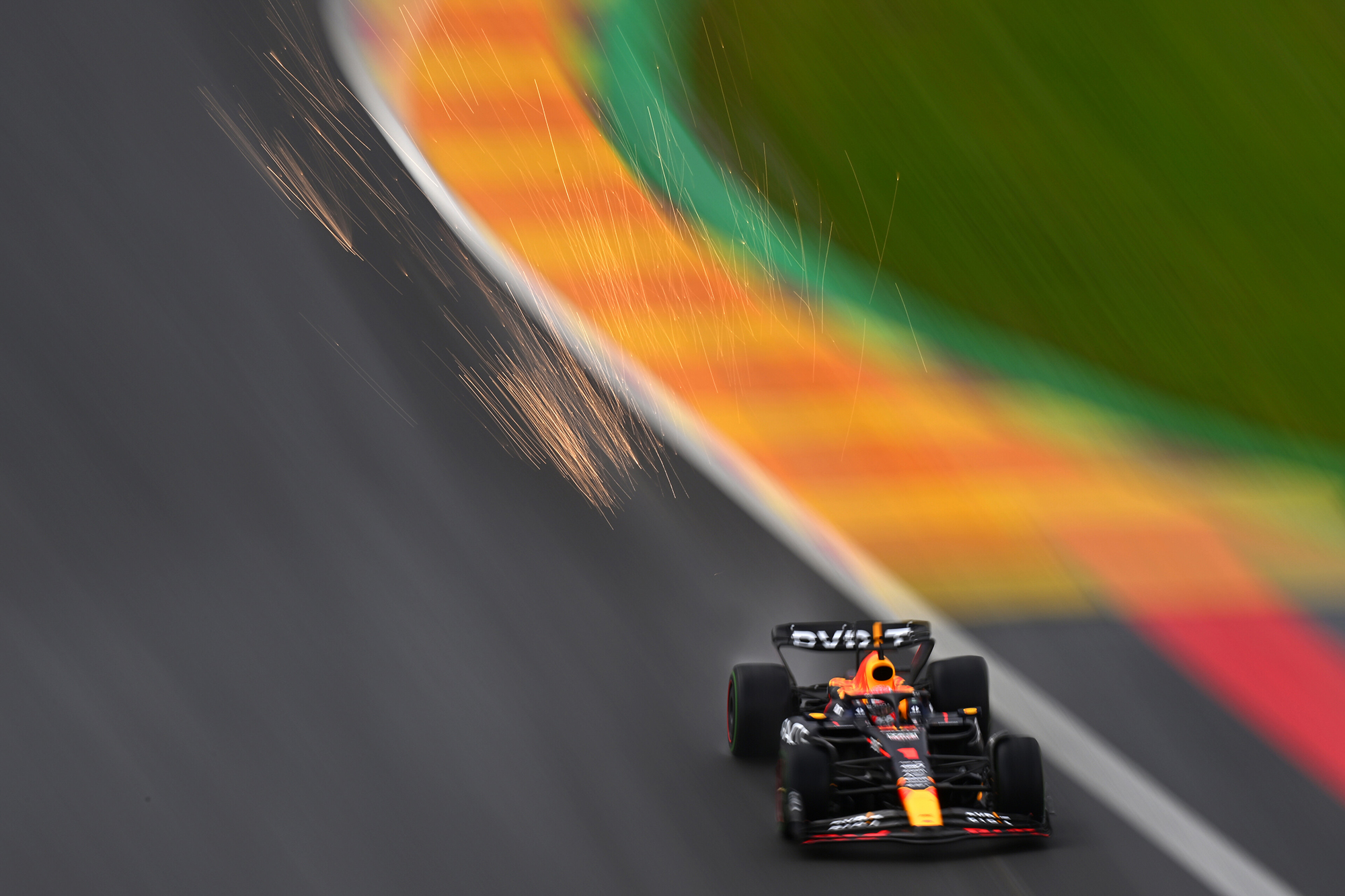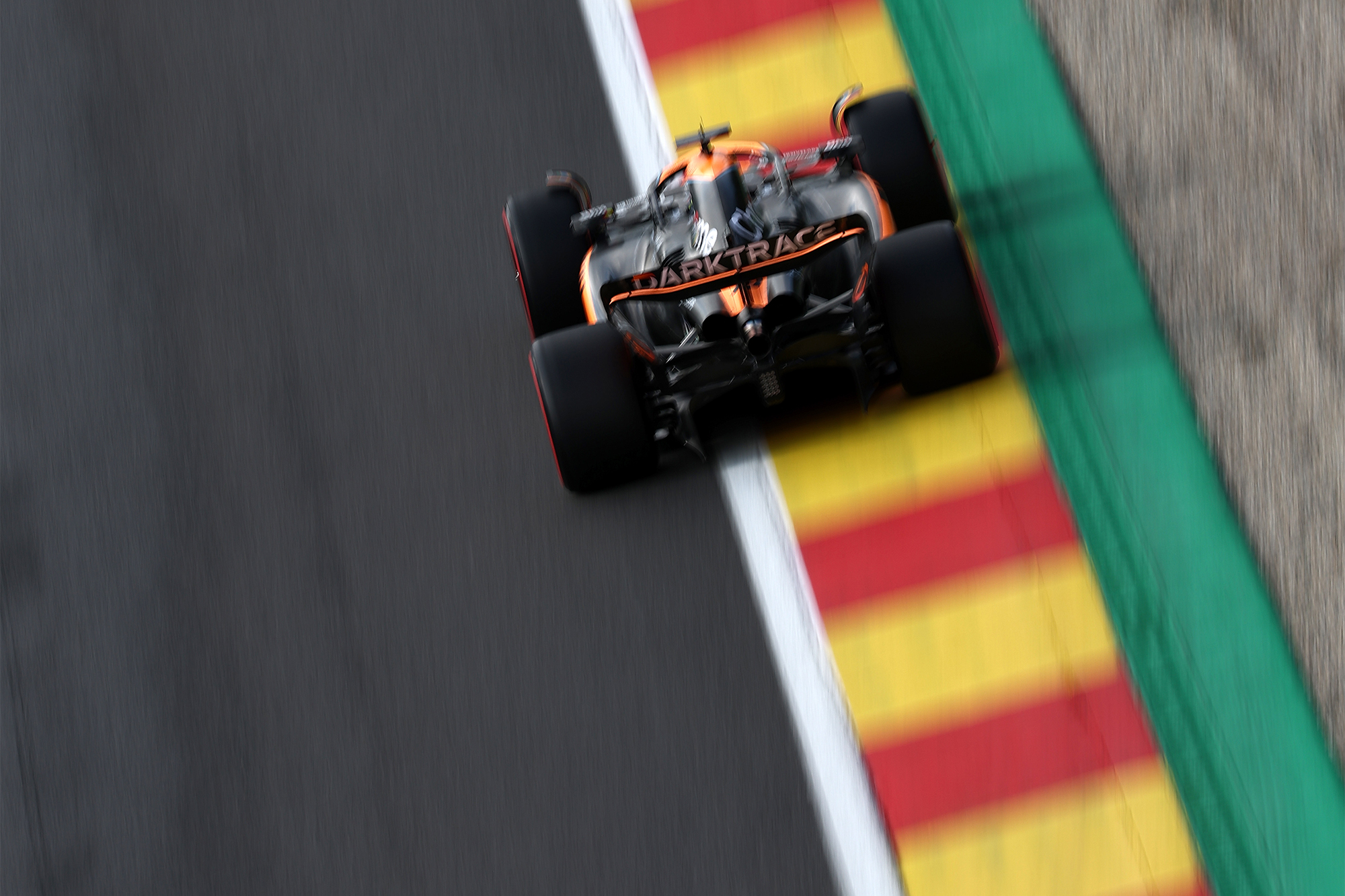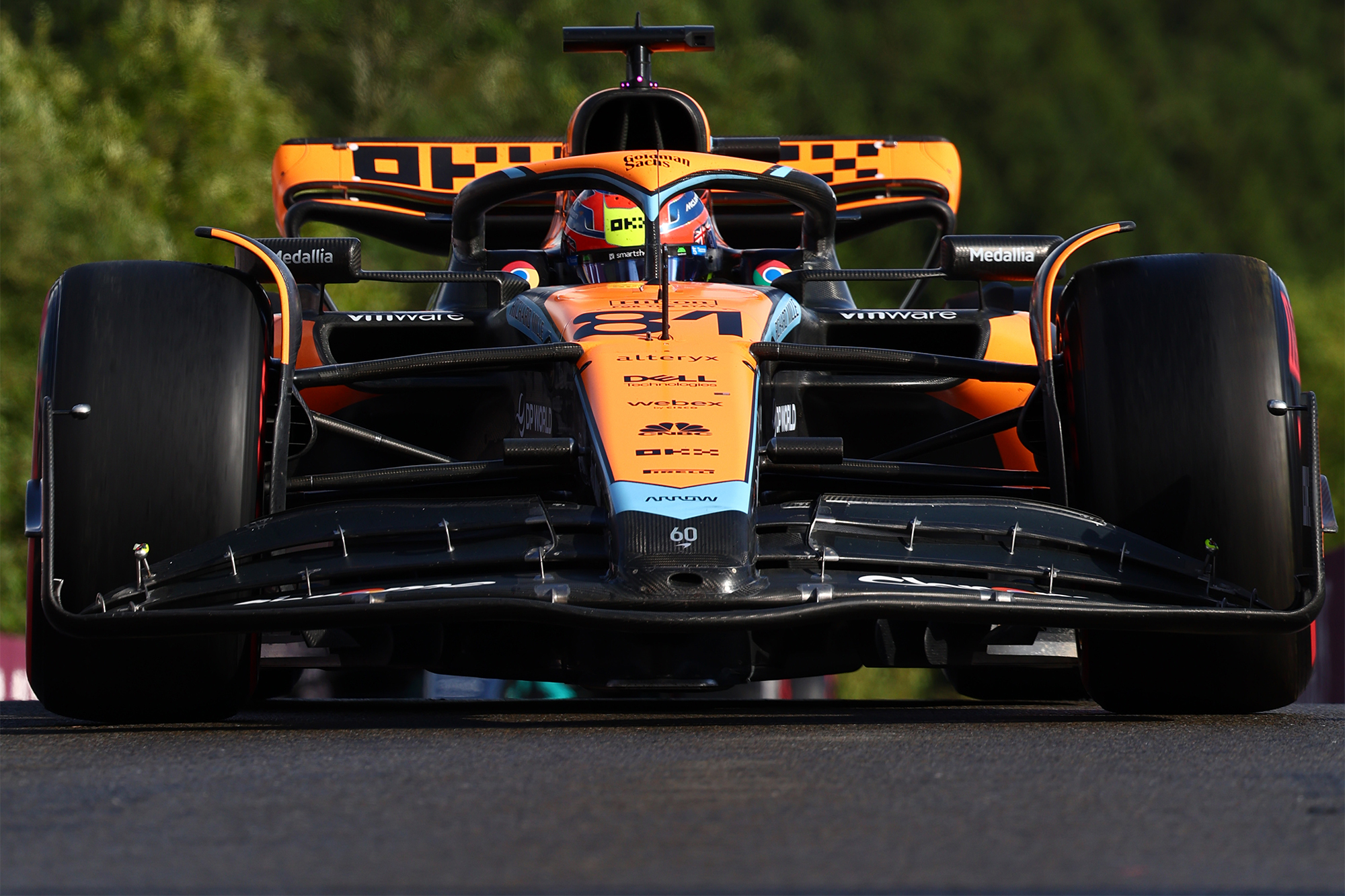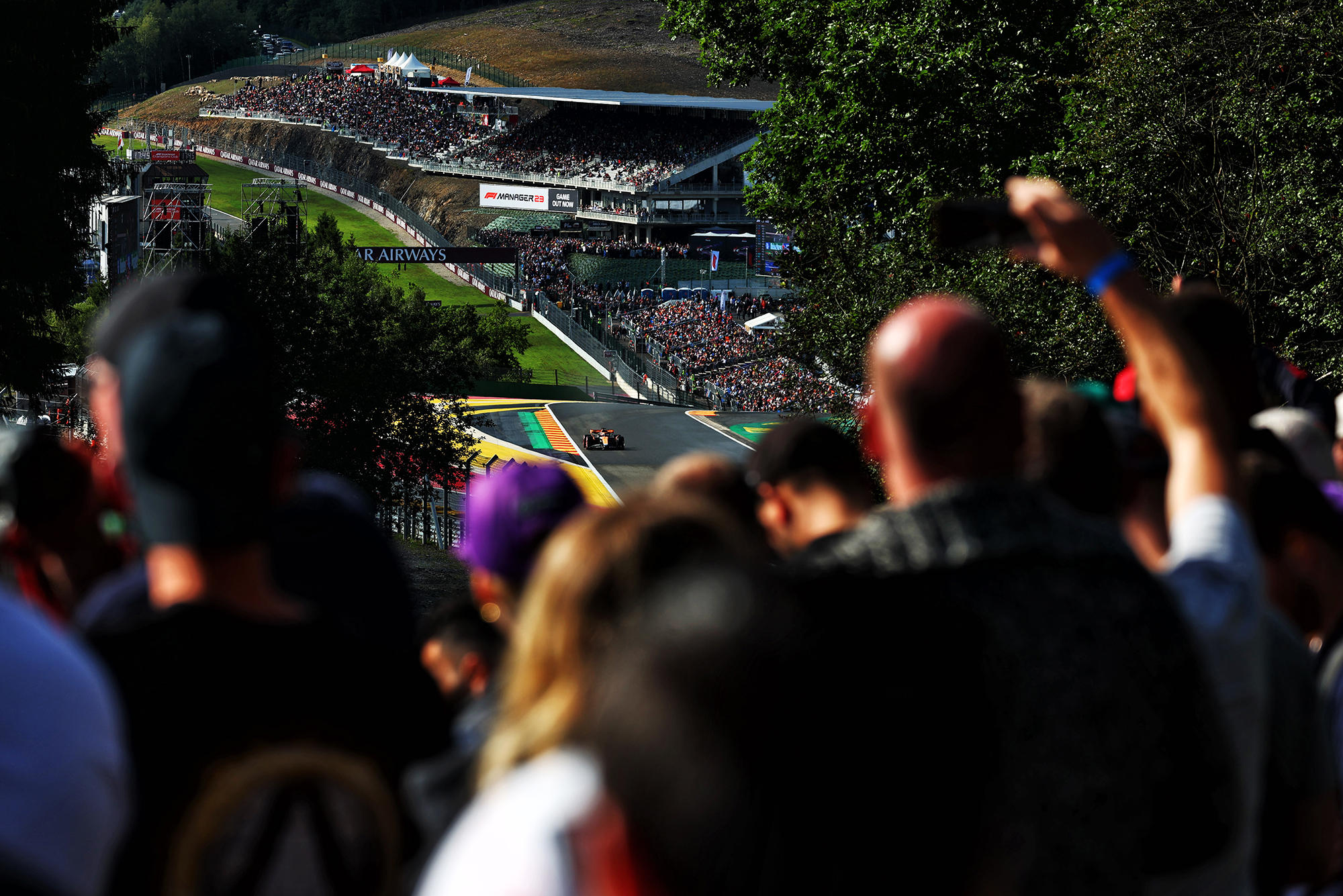Up Next

Quick in the wet or dry, or a mixture of wet/dry, flying down the straights but incredible through the fast sweeps of Spa’s middle sector too, an apparent contradictory speed profile: just another pulverising demonstration of the combined force of a Red Bull RB19 and Max Verstappen on a circuit which could have been made to spotlight it.
Just like last year he’s taking a grid penalty at Spa (albeit only five places this time) but just like last year his and Red Bull’s margin of superiority is bigger here than at any other circuit, with the exception of the very wet conditions of Montreal (where it was 1.45%)
Red Bull qualifying superiority
Spa 0.77%
Barcelona 0.63%
Jeddah 0.53%
Silverstone 0.48%
Miami 0.32%
Melbourne 0.31%
Sakhir 0.18%
Monaco 0.11%
Red Bull Ring 0.07%
(Baku/Hungaroring – Red Bull beaten in qualifying)
What is it about Spa which releases the Red Bull’s (and Verstappen’s) best stuff?
It’s the biggest test of aero efficiency on the calendar, with the long straights of sectors 1 and 3 and the high-speed downforce demands of the middle sector. Because the Red Bull derives such a high proportion of its total downforce from the low-drag underfloor (and therefore less from its high-drag wings), because its suspension allows a good low ride height in low speed and high, because it can be run so low. For all these reasons its aero efficiency is of a different league to the others.

Couple that with how its usual small deficiency of front tyre warm-up is not apparent on a track with a 4.3-mile long preparation lap, and we see the car’s natural superiority enhanced here.
For every other car, the choice of downforce levels is a stark one. For the others, you can be fast in sector 2 but slow in 1 and 3. Or vice-versa. Depending on how much wing you want to run.
The perfect case studies for this are the Ferrari and McLaren. Ferrari ran very trimmed out, McLaren loaded up with wing.
Ferrari/McLaren compared to Red Bull
| Sector 1 | Sector 2 | Sector 3 | |
| Ferrari | Equal | +0.8s | +0.1s |
| McLaren | +0.4s | +0.2s | +0.5s |
The Ferrari’s huge deficit through the fast curves of Pouhon, Fagnes etc is very apparent. That’s how much downforce – 0.8s-worth in one sector – has to be surrendered to be Red Bull-quick on the straights.
The McLaren is a little down on the Red Bull everywhere, but is at its closest in the high-downforce demands of that middle sector. In fact, only Oscar Piastri is anywhere close to Verstappen through this section. Other than Piastri, the closest anyone is to Verstappen through there is 0.8s (Charles Leclerc, Lando Norris and Sergio Perez). Piastri is within 0.2s, a full 0.4s faster than team-mate Norris. In fact Piastri’s advantage over Norris through here is as big as Verstappen’s over Perez, with the caveat that Norris reported “a lot” of floor damage from an incident in Q1. Although the McLaren was carrying more wing than others, there was no difference in the wing levels between the two McLarens.

This speaks of just how much the driver has to bring to this middle sector regardless of the downforce they are enjoying. The balancing point of brakes and lateral load through such super-fast corners is incredibly delicate.
Talk to those who see Verstappen’s traces up close and the most remarkable thing, they say, is how he can feel the perfect trade-off between those two states, adjusting pedal pressure and steering just short of the time-consuming slide – or the firing off the road.
Talk to those working closely with the rookie Oscar Piastri and they are saying much the same thing. He’s not putting the whole thing together as consistently well, but he’s exceptional through fast corners where that very same almost extra-sensory dimension of that delicate trade-off is so apparent.

Piastri and Norris ended up only sixth and seventh fastest respectively, Piastri around 0.4s off the Ferraris and 0.3s off Lewis Hamilton’s Mercedes. They just lost too much time down those long straights.
That choice of wing level does not have the same effect between different cars. Depending on where the team has pitched the optimum part of the car’s aero map, it can be that reducing the wing on the McLaren to Mercedes levels would not find it as much on the straights – or that if Mercedes increased its wing level to that of McLaren it might still not be as quick through the middle sector (as was suggested by the bigger winged George Russell’s time being 0.8s slower than Hamilton’s). These were just the respective wing levels at which the McLaren and Mercedes were happiest around here.

Had the Q3 session not been delayed by 10 minutes to clear the gravel spread on track in Q2, with the track becoming ever less damp, then McLaren may have been able to have overcome its deficit to Mercedes in the way it was switching on its tyres in the damp conditions. This had helped Piastri be fastest in Q2 (though Verstappen did not do a representative lap). By the time of Q3 the track was dry enough for this not to matter, as everyone’s warm-up problems disappeared.
Had it remained as wet as in Q2, maybe Piastri – rather than Leclerc – could have been Verstappen’s closest rival.
But no one was ever going to actually threaten Max’s superiority here.




